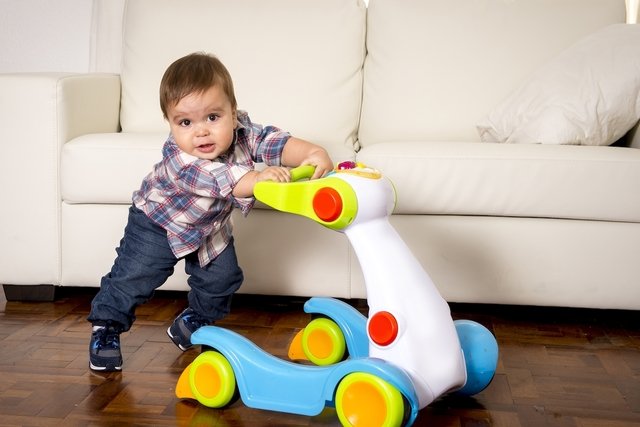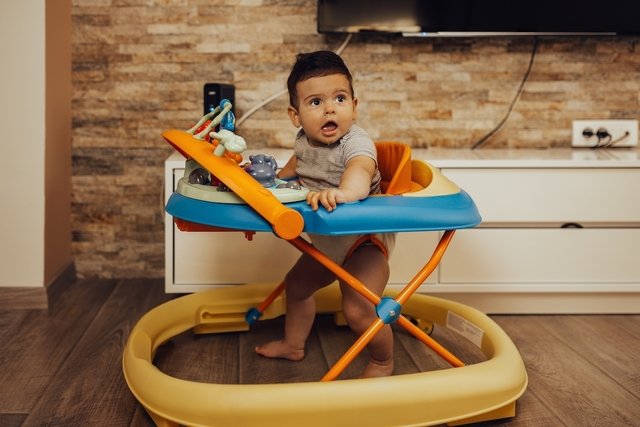The children’s walker is known for being a device that allows babies to learn to walk more quickly and exercise. When choosing, you must take into account the type of walker, that is, whether it is a push walker. or a walker that the baby sits on.
The most suitable baby walker is the one that the baby pushes, similar to a shopping cart, as it does not harm the joints or posture while the child walks.
Classic walkers, in which the baby sits, are not recommended and are prohibited for sale in some states, as they can delay the child’s development and increase the risk of accidents such as falls.

What is the best baby walker
The best walker for babies is the one that pushes forward, as if it were a supermarket trolley, as it gives the baby confidence to take their first steps, without damaging their posture when walking.
With the push walker, the baby cannot reach the same speeds as with the classic walker and, therefore, the risk of a serious accident is lower.
Babies can start using a walker around 9 months, as at this age they can already lean on some objects to stay upright. However, it is important that the use of the walker is recommended by the pediatrician, as he is aware of the baby’s development, allowing him to adapt the beginning of its use.

Main disadvantages of the classic walker
The classic walker, that is, the one in which the baby sits, can be harmful to their development and may put their safety at risk. The main disadvantages of the classic walker are:
- The baby learns to walk wrongonce you learn to walk sitting down;
- The gait can be late or more clumsybecause the baby can move quickly and when he is not in the walker, he has difficulty walking in the same way;
- The baby does not learn the correct posture to walk, because he learns to walk sitting down and when he is without the support of the classic walker he tends to lean over;
- Incorrect force when stepping on the flooras the baby walks with the tips of his feet and when he tries to walk without a walker, his step tends to be inclined, which can cause pain in his feet;
- Increases the risk of accidentsbecause the baby can increase speed and hit an object with intensity, which can cause injury, such as fractures or head trauma.
However, it is always important for parents to be aware of changes in the baby’s development, such as not having a correct posture, walking at an angle or not placing their feet completely on the floor. It is necessary to consult a pediatrician for evaluation, as the child You may have a problem with your bones.

How to help your baby start walking
Normally, babies begin to take their first steps after 12 months, and are expected to be able to walk well and independently around 18 months. However, each baby has its own rhythm, and therefore, this time may change, making it important for parents to pay attention to stimulate the child.
Parents can help encourage the baby to walk through strategies such as giving the baby confidence by being close to him in his attempts to walk, offering balance support with one hand and leaving him on the floor in a safe and comfortable place.
During this entire moment, it is important that parents convey calm and security to the baby, as well as letting him explore the space so that he feels safe and confident when trying to walk. See 5 games to encourage your baby to walk alone.
Watch the video and see how to encourage your baby to walk:

Sign up for our newsletter and stay up to date with exclusive news
that can transform your routine!
Warning: Undefined array key "title" in /home/storelat/public_html/wp-content/plugins/link-whisper-premium/templates/frontend/related-posts.php on line 12
Warning: Undefined array key "title_tag" in /home/storelat/public_html/wp-content/plugins/link-whisper-premium/templates/frontend/related-posts.php on line 13



